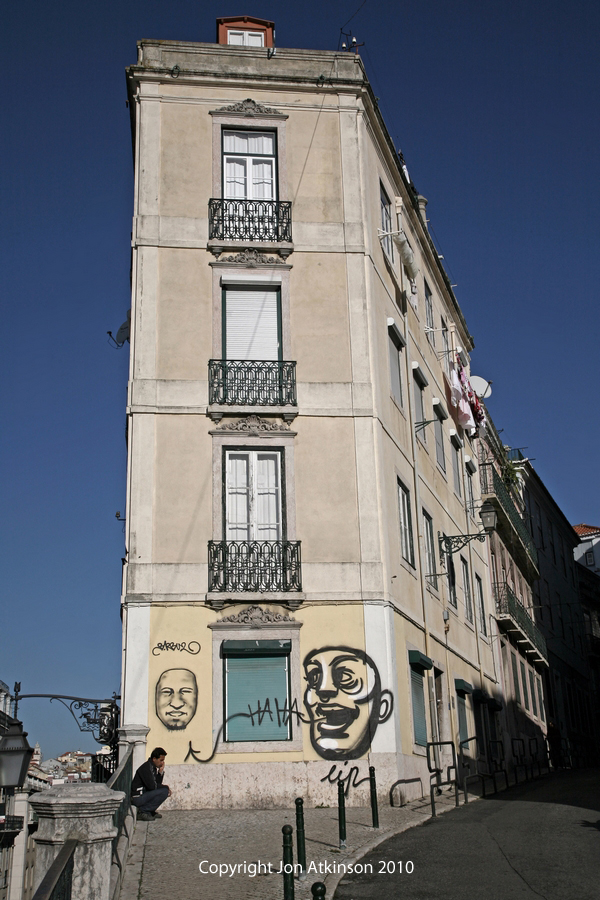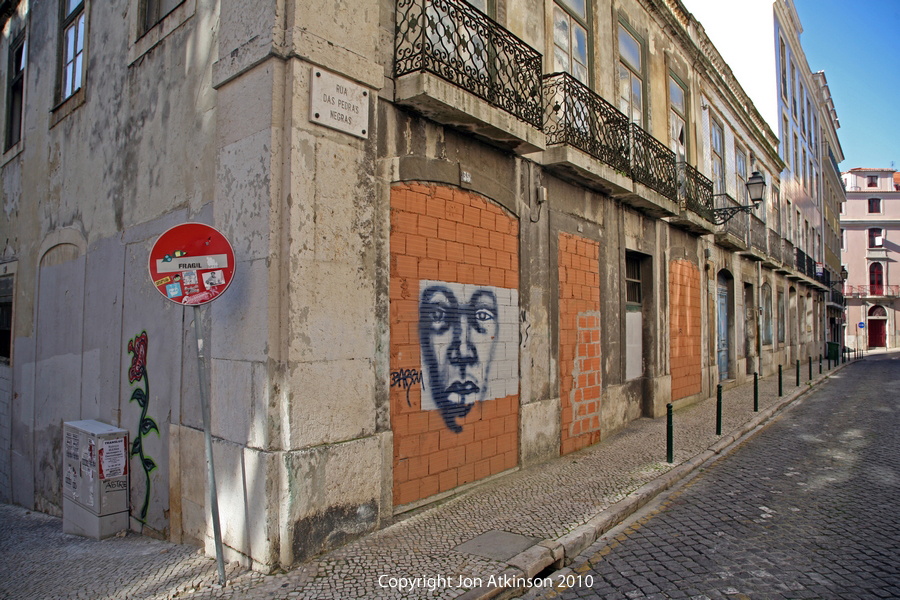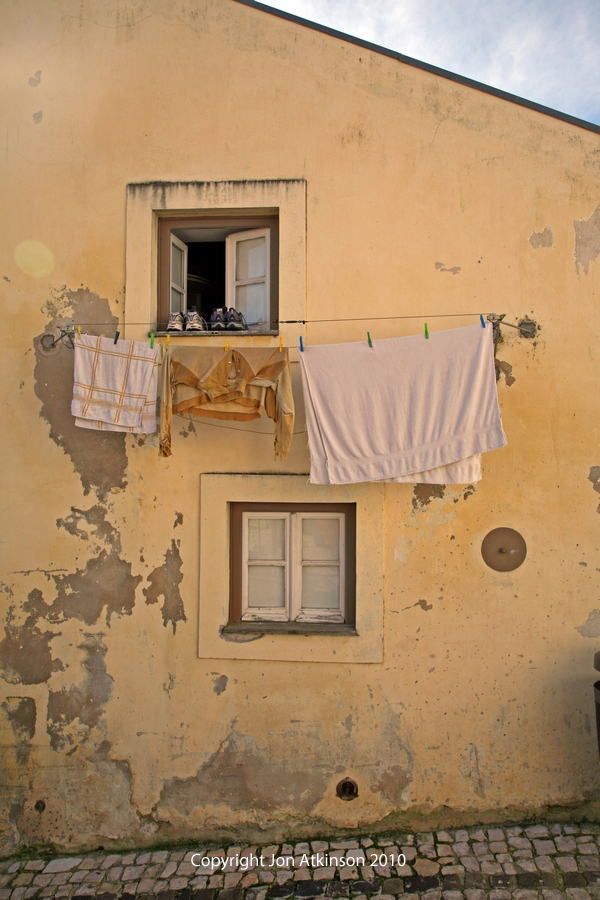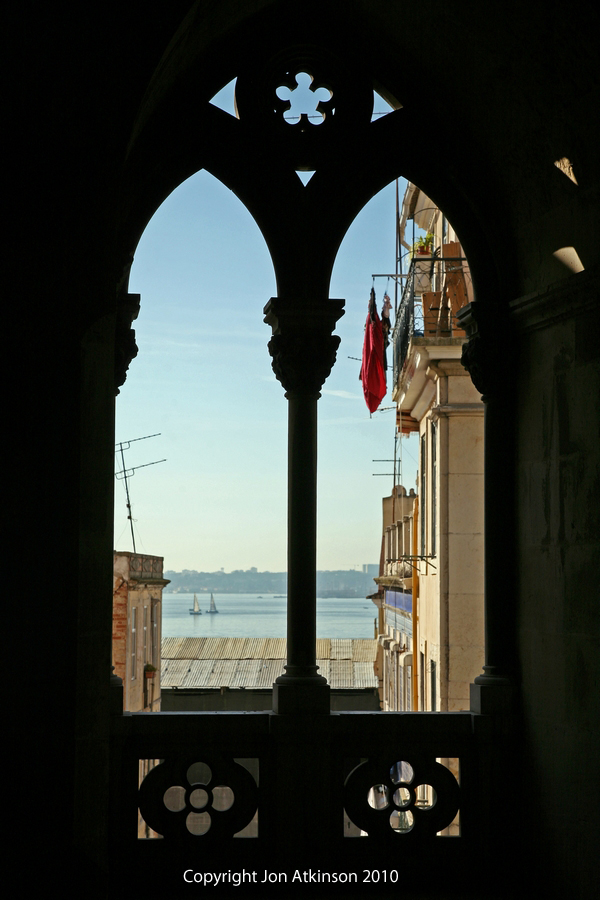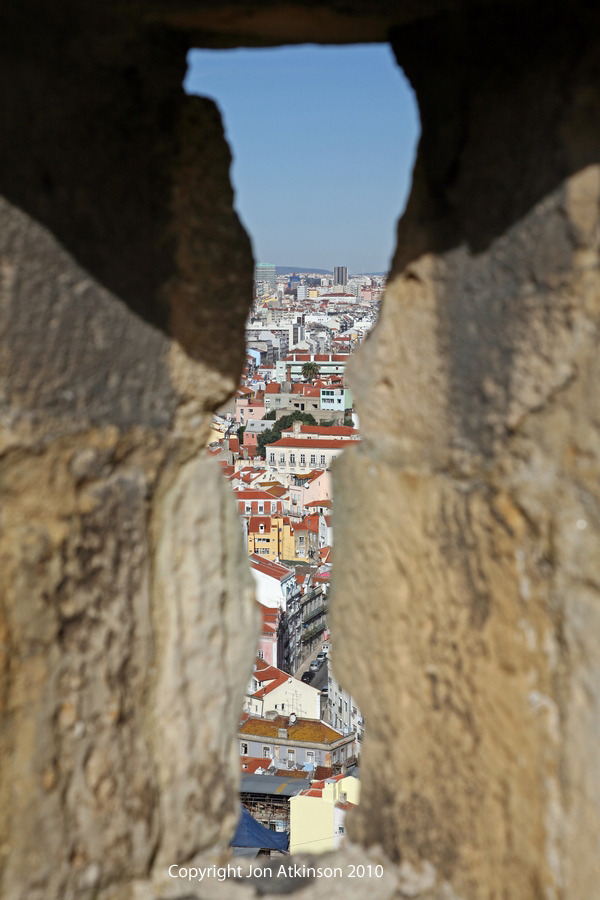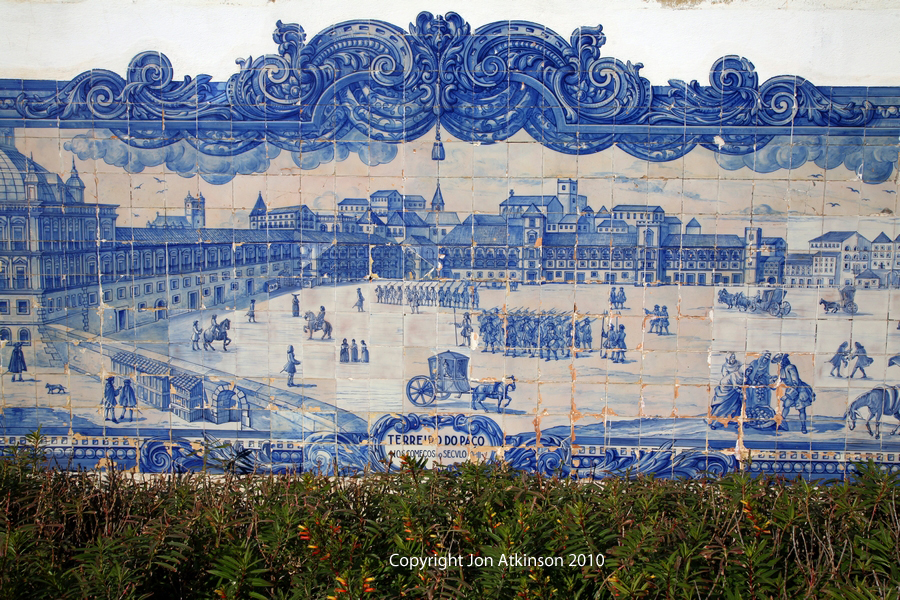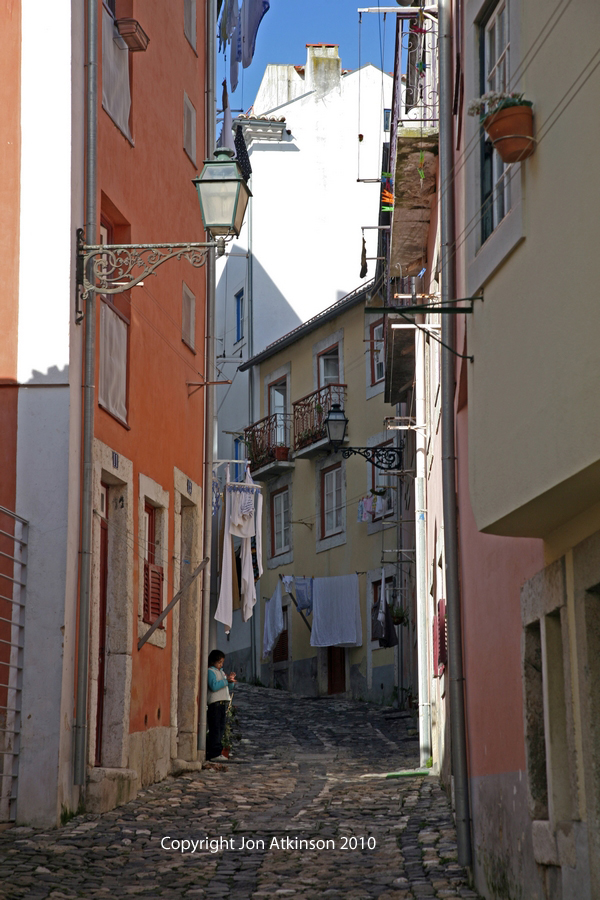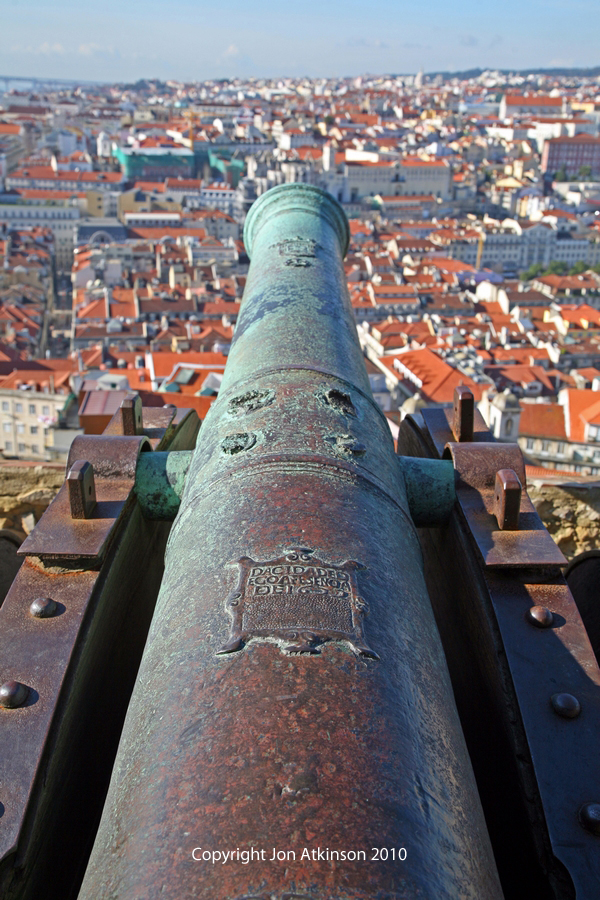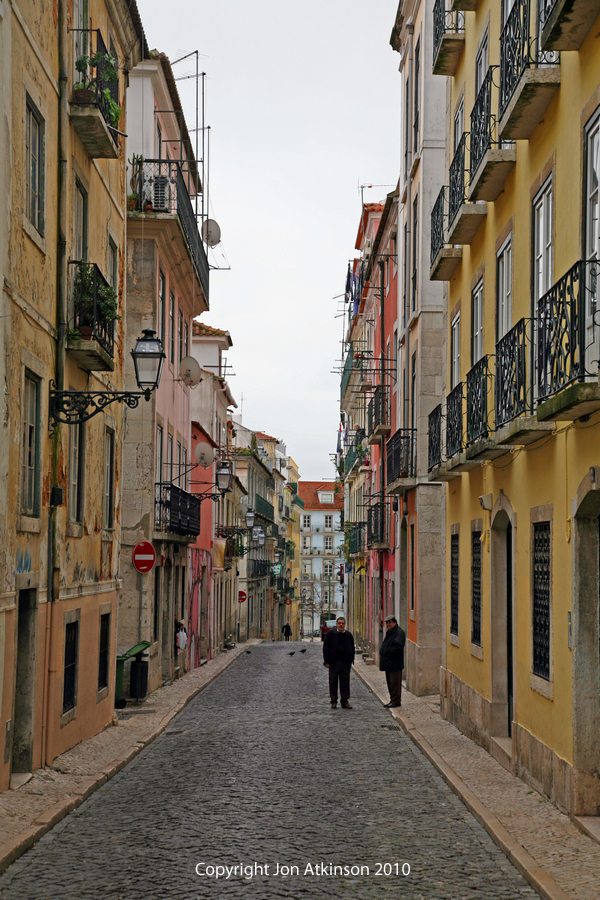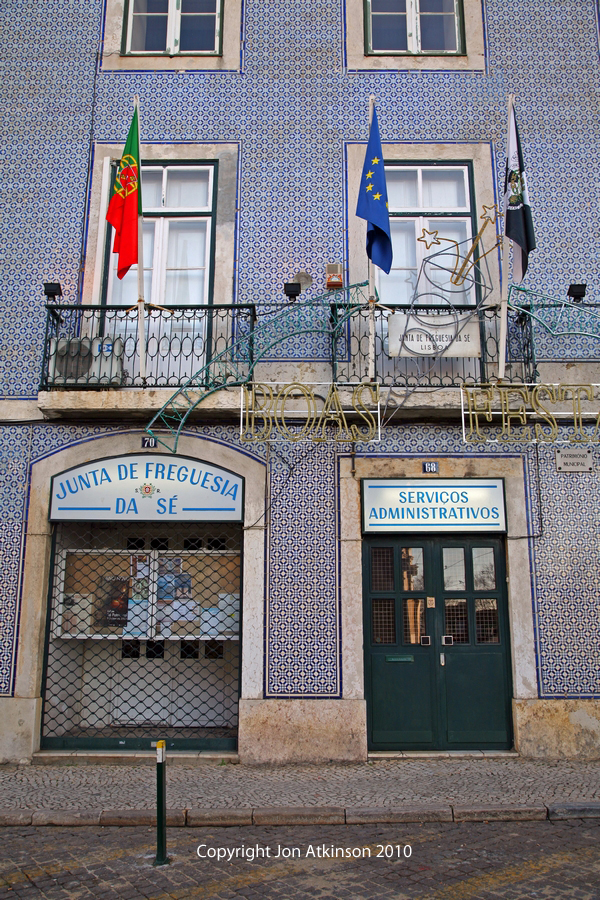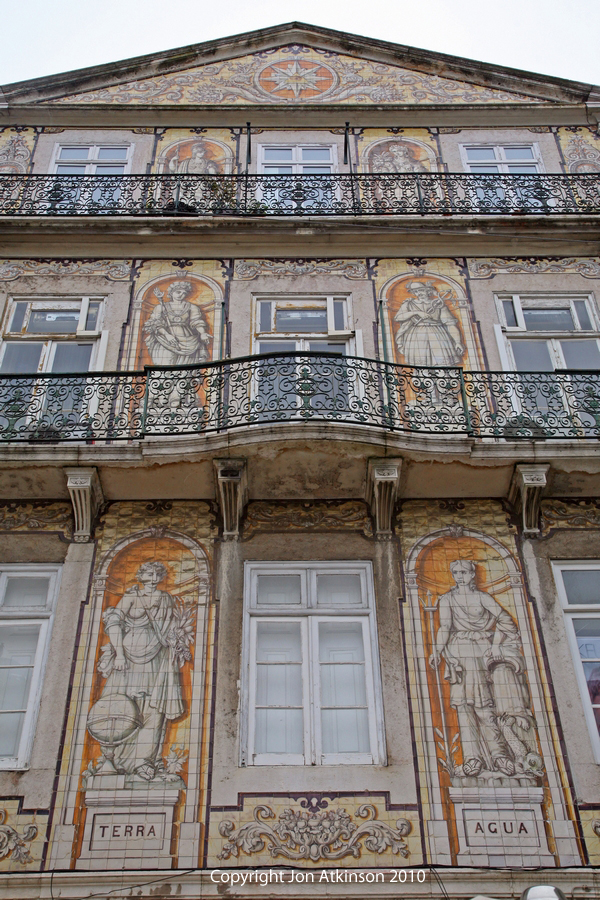Lisbon_1 - Graffiti covered Building, Alfama district, Lisbon: Graffiti covers the wall of a building in the Alfama district of Lisbon, Portugal. |
Lisbon_2 - Graffiti covered Building, Alfama district, Lisbon: Graffiti face and rose on the wall of a building in the Alfama district of Lisbon, Portugal. |
Lisbon_3 - Washing and Shoes, Lisbon, Portugal: Washing hangs out to dry and shoes are aired on a small building in the historic Alfama region of Lisbon, Portugal. |
Lisbon_4 - Tagus River View, Lisbon, Portugal: Scenic view through the window of the Tagus River in Lisbon, taken from inside the Church of Santa Maria Maior Lisbon Patriarchal Cathedral.
| Lisbon_5 - View from Castle of São Jorge, Lisbon: View of lisbon taken through an arrow slit in the wall of the castle of São Jorge. |
Lisbon_6 - View from Castle of São Jorge, Lisbon: View of lisbon taken through a window of the castle of São Jorge.
|
Lisbon_8 - Azulejo Tiles, Church Santa Luzia, Lisbon: The term azulejo comes from the Arabic word az-zulayj, meaning "polished stone.Tile's on the wall of the church of Santa Luzia in the Alfama district depicting the Comercio Square before the 1755 Earthquake. |
Lisbon_9 - 25 de Abril Bridge, Lisbon, Portugal: The sun sets behind the 25 de Abril Bridge which was was inaugurated on August 6, 1966 and connects Lisbon to o the municipality of Almada. |
|
Lisbon_10 - Street in Bairro Alto District, Lisbon: Girl stands on a deserted street in the Bairro Alto district which is one of the oldest areas in Lisbon. |
Lisbon_11 - View from castle of São Jorge, Lisbon: Panoramic view of the city of Portugal taken from the walls of the castle of São Jorge in Lisbon. |
Lisbon_12 - Rua Da Barroca, Lisbon, Portugal: Rua Da Barroca street in the Bairro Alto district of Lisbon which literally means "upper quarter" in Portuguese. |
Lisbon_13 - Azulejo Tiled Building, Lisbon, Portugal: These tiles have always been used in a very original form in Portugal. Even though they have a common use in other countries such as Italy, Spain, Turkey or Morocco, in no country have they become such a relevant form of artistic expression, as they have done in Portugal. They are used to decorate interiors or whole facades of houses or churches. They have had a poetic intervention in the architectural form of Lisbon. |
Lisbon_14 - Azulejo Tiles, Church Santa Luzia, Lisbon: Azulejos tiles are found everywhere in Portugal. They decorate everything from walls of churches and monasteries, to palaces, ordinary houses, park seats, fountains, shops, and railway stations. They often portray scenes from the history of the country, show its most ravishing sights, or simply serve as street signs, nameplates, or house numbers. |
Lisbon_15 - Tiled Building on Rua Da Trindade, Lisbon: The term azulejo comes from the Arabic word az-zulayj, meaning "polished stone." These tiles underwent various influences, from the Islamic tradition, to the influences from the Dutch market that had a wide demand for these tiles, having changed the way they were painted, the symbolism or characteristics. |

